Episode 1331: Are you really Catholic?
I was speaking with two friends after the MPH devotion when there was a group of Catholics at SWC holding what seemed like a charismatic revival with certain music and some dancing. I made the comment that these movements came into the catholic church after VII and really were not catholic but more protestant revival celebratins disguised as Catholic. One of my friends said “well David danced in front of the ark of the coventant didn’t he?”
What she was referring to was that in 2 Samuel 6:14-15.
David danced in front of the Ark of the Covenant as described in the Bible, specifically in 2 Samuel 6:14-15. The Ark of the Covenant was a sacred object in the Israelite tradition that symbolized the presence of God. It contained the stone tablets with the Ten Commandments and held great religious significance.
The reason David danced in front of the Ark of the Covenant was due to a joyful and celebratory occasion. The Ark was being brought back to Jerusalem after it had been captured by the Philistines. David, who was the King of Israel at the time, was leading the procession and was filled with a sense of gratitude, reverence, and jubilation for the return of the Ark to its rightful place.
David's dance was a spontaneous expression of his joy and devotion to God. He danced with all his might, wearing a linen ephod, which was a garment associated with priests. It was an exuberant display of worship, accompanied by music and singing. The act demonstrated David's deep connection and love for God, and his acknowledgment of God's presence among the Israelites through the Ark.
Some interpretations also suggest that David's dance represented his humility before God, as he danced in a way that might be considered undignified for a king. Nevertheless, his intention was purely driven by his spiritual enthusiasm and reverence for the Ark.
It's important to note that practices and interpretations can vary within different branches of Christianity, including Catholicism. While 2 Samuel 6:14-15 describes David dancing before the Ark of the Covenant, it is not necessarily used as a direct justification for priests dancing on the altar in the Catholic tradition.
In the Catholic Church, the liturgy and the celebration of the Eucharist are highly structured and follow specific rubrics. The gestures and movements of the priests during the Mass are carefully prescribed and intended to maintain reverence and focus on the sacrament.
The objection to dancing on the altar in the Catholic context is rooted in the understanding that the altar is a sacred space where the Eucharist is consecrated. It is seen as a place of solemnity and reverence, and any additional actions or movements that could distract from the central focus of the Mass may be considered inappropriate.
While individuals may hold personal opinions on this matter, it's important to recognize that the Catholic Church, through its liturgical guidelines and teachings, seeks to maintain a sense of reverence and dignity during the celebration of the Mass.
But where am I really going with this episode?
The doctrine, dogma, faith and morals of the Catholic Church.
The traditional Catholic dogma and doctrine of the faith refer to the core teachings and beliefs held by the Catholic Church, which have been passed down through generations and are considered authoritative and unchangeable.
Dogma refers to the revealed truths that Catholics believe are divinely revealed by God and are essential for salvation. These dogmas are defined by the Magisterium, the teaching authority of the Church, and are considered infallible and binding on all Catholics. Examples of dogmas include the belief in the Holy Trinity, the divinity of Jesus Christ, and the Immaculate Conception of the Virgin Mary.
Doctrine, on the other hand, encompasses the broader body of teachings and beliefs of the Catholic Church that are not considered dogmas but are still authoritative and binding. Doctrines may address various aspects of faith and morals, such as sacraments, moral principles, liturgical practices, and the structure of the Church. While doctrines can be subject to development and clarification over time, they are expected to be consistent with the dogmas.
The traditional aspect of Catholic dogma and doctrine emphasizes the continuity of these teachings with the early Church and the importance of preserving the deposit of faith handed down from the apostles. It highlights adherence to the teachings as understood throughout history and can be contrasted with more modern or progressive interpretations that some Catholics may espouse.
So lets discuss faith and morals of the Church.
The faith and morals of the traditional Catholic Church are based on the teachings of Scripture, Tradition, and the Magisterium (the teaching authority of the Church). Here are some key aspects of the faith and morals upheld by the traditional Catholic Church:
Belief in the Holy Trinity: Traditional Catholics affirm the belief in one God who exists in three persons: Father, Son (Jesus Christ), and Holy Spirit. The Trinity is considered a central mystery of the Christian faith.
Salvation through Jesus Christ: Traditional Catholics believe in the saving work of Jesus Christ, who through His life, death, and resurrection offers redemption and eternal life to humanity. Faith in Christ and participation in the sacraments are seen as essential for salvation.
Sacraments: The traditional Catholic Church recognizes seven sacraments: Baptism, Confirmation, Eucharist (Holy Communion), Penance (Confession), Anointing of the Sick, Holy Orders (ordination), and Matrimony. These sacraments are considered channels of God's grace and are integral to the spiritual life of Catholics.
Moral teachings: The traditional Catholic Church upholds a moral code based on natural law and the Ten Commandments. It emphasizes the dignity of every human life from conception to natural death, the sanctity of marriage between one man and one woman, and the importance of virtuous living.
Authority of the Pope and Magisterium: Traditional Catholics recognize the authority of the Pope, who is considered the successor of Saint Peter and the visible head of the Church. They also acknowledge the teaching authority of the Magisterium, which includes the Pope and the bishops in communion with him.
Devotion to Mary and the saints: Traditional Catholics have a deep reverence for the Blessed Virgin Mary, considering her as the Mother of God and a powerful intercessor. They also venerate the saints as role models and seek their intercession.
So lets discuss the moral teachings.
The moral teachings of the traditional Catholic Church are derived from a combination of Scripture, natural law, and the authoritative teachings of the Magisterium. Here are some key areas and principles of Catholic moral teachings:
Human Dignity: The traditional Catholic Church teaches that every human being is created in the image and likeness of God and possesses inherent dignity. This teaching forms the foundation for all other moral principles and entails respect for the sanctity of human life, the protection of human rights, and the promotion of human flourishing.
Sanctity of Life: Traditional Catholic moral teachings strongly emphasize the sacredness of human life from conception to natural death. Abortion, euthanasia, and intentional killing are considered grave offenses against the dignity of human life.
Sexual Ethics: The traditional Catholic Church teaches that sexual activity is reserved for the context of marriage between one man and one woman. It upholds the unitive and procreative aspects of marital relations and opposes contraception, premarital sex, adultery, pornography, and homosexual acts.
Marriage and Family: The traditional Catholic Church recognizes marriage as a lifelong covenant between a man and a woman, centered on love, mutual self-giving, and openness to procreation. It teaches that the family, based on the marriage bond, is the fundamental unit of society and the primary place for the formation and education of children.
Virtues and Moral Formation: Traditional Catholic moral teaching emphasizes the cultivation of virtues, such as prudence, justice, fortitude, and temperance. These virtues help individuals develop good moral character and make right decisions in various situations. The Church encourages moral formation through prayer, sacraments, study of Scripture, and participation in the life of the Church.
Social Justice: The traditional Catholic Church has a strong commitment to social justice, which includes addressing issues of poverty, inequality, and the common good. It promotes solidarity, subsidiarity (the principle that matters should be handled by the smallest, lowest, or least centralized competent authority), and the preferential option for the poor.
The authority and magisterium of previous popes cannot be negated or revoked by a subsequent pope. The papal office, as understood in the Catholic Church, is considered to have a charism of infallibility in matters of faith and morals under certain conditions. This means that when the Pope solemnly defines a doctrine concerning faith or morals, guided by the Holy Spirit, it is considered infallible and binding on all Catholics.
However, it's important to note that popes can provide further clarification, development, or interpretation of previous teachings in light of new circumstances or insights. This is known as the development of doctrine. While a pope cannot simply negate or reject the teachings of previous popes, there can be a development or deepening of understanding over time, leading to a more nuanced application of those teachings.
It is the responsibility of the Pope, as the successor of St. Peter and the head of the Church, to safeguard and transmit the deposit of faith faithfully. The Pope is expected to act in continuity with the teachings of previous popes and the Magisterium, ensuring that any development or clarification remains consistent with the core beliefs and doctrines of the Catholic Church.
In cases where there may be apparent contradictions or tensions between the teachings of different popes, the Church often engages in careful theological and historical analysis to understand the continuity and harmony of the Magisterium over time. The role of the Magisterium and the living tradition of the Church help provide guidance and clarity in such situations.
-
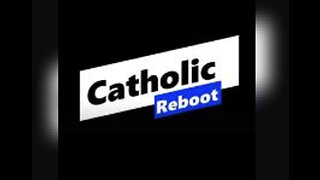 19:18
19:18
CatholicReboot
1 year agoEpisode 893: Catholic Priesthood - Part 2
1.04K7 -
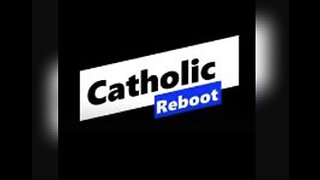 28:25
28:25
CatholicReboot
1 year agoEpisode 999: Why as Catholics do we follow the Passion of Christ
201 -
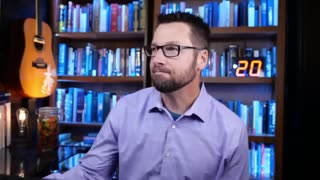 1:47:19
1:47:19
HandinHandwithGodTv
1 year ago20 Questions with Pastor Mike (Episode 96)
94 -
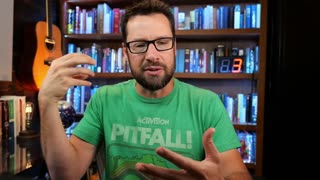 1:45:57
1:45:57
HandinHandwithGodTv
10 months ago20 Questions with Pastor Mike (Episode 103)
75 -
 1:33:43
1:33:43
HandinHandwithGodTv
1 year ago20 Questions with Pastor Mike (Episode 87)
69 -
 1:56:45
1:56:45
HandinHandwithGodTv
8 months ago20 Questions with Pastor Mike (Episode 106)
278 -
 1:56:04
1:56:04
HandinHandwithGodTv
1 year ago20 Questions with Pastor Mike (Episode 95)
97 -
 2:00:00
2:00:00
HandinHandwithGodTv
11 months ago20 Questions with Pastor Mike (Episode 101)
108 -
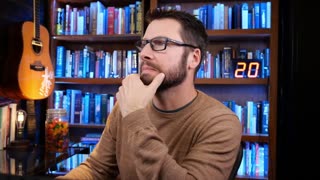 1:52:54
1:52:54
HandinHandwithGodTv
1 year ago20 Questions with Pastor Mike (Episode 93)
117 -
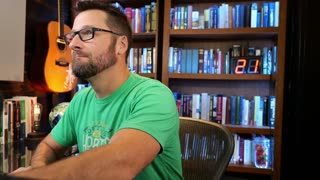 1:56:25
1:56:25
HandinHandwithGodTv
10 months ago20 Questions with Pastor Mike (Episode 104)
88